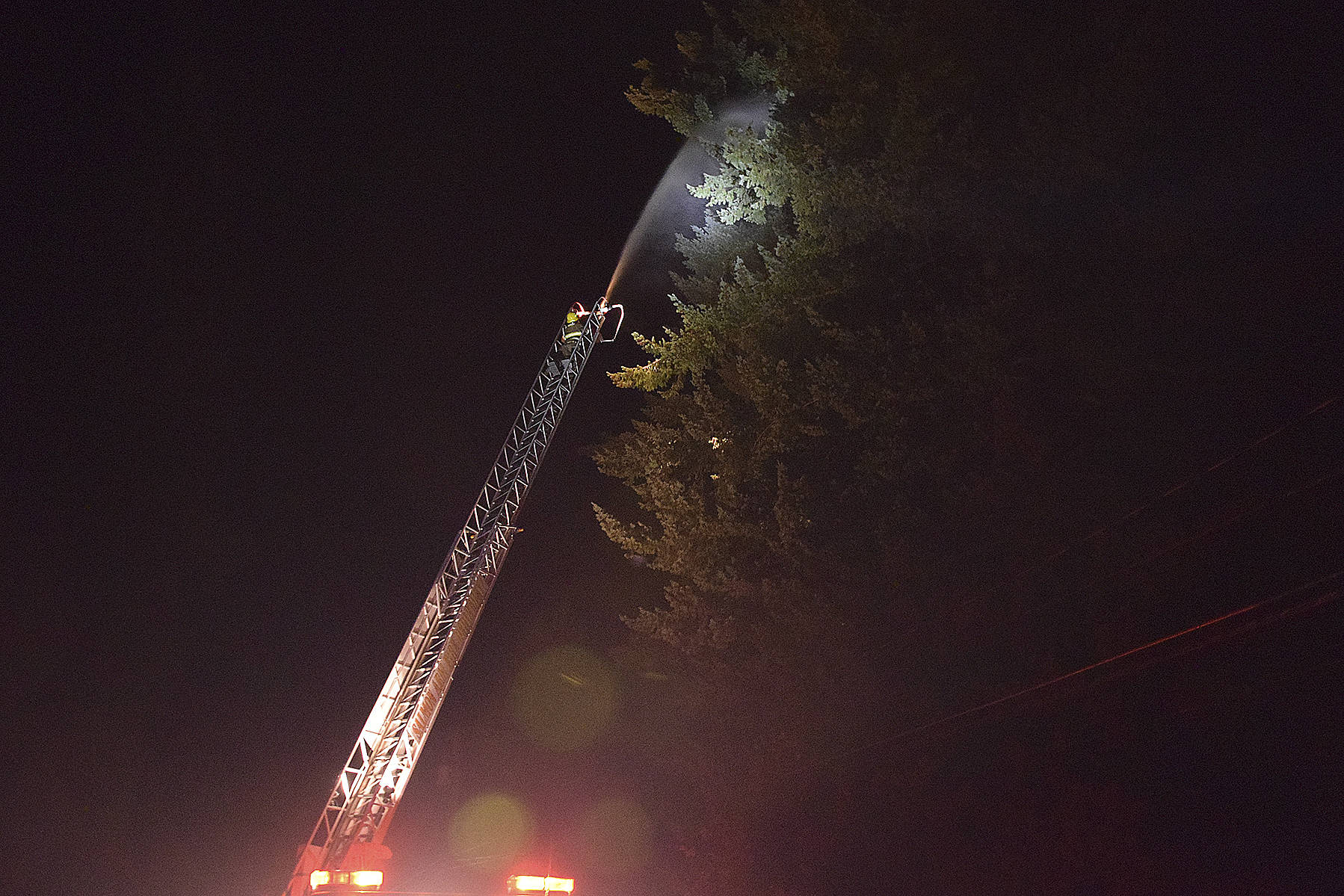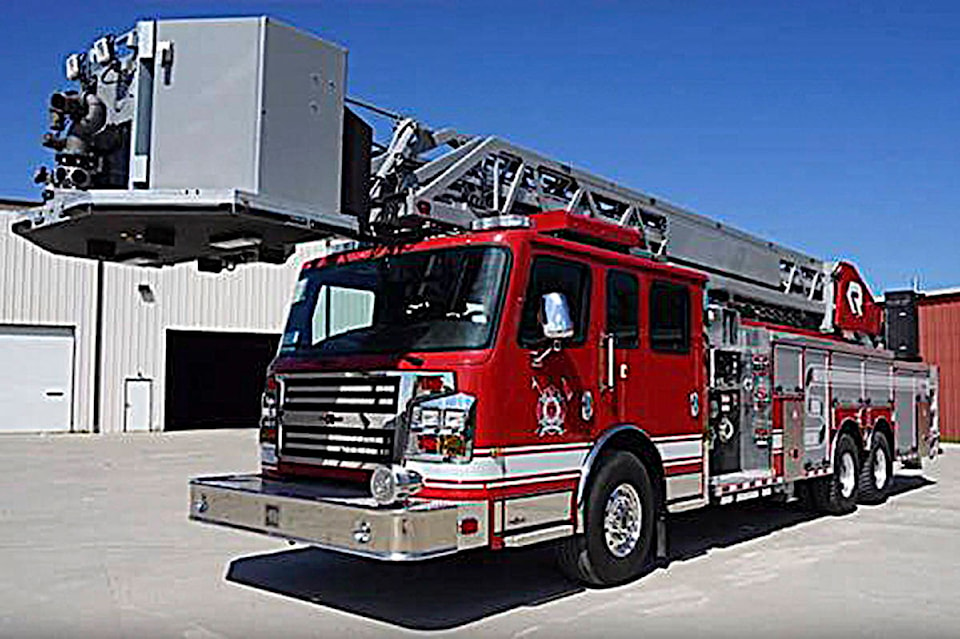For the Salmon Arm Fire Department, this is a big ticket item – the biggest so far.
A brand new $1.5 million, shiny red, aerial ladder fire truck will be rolling into Salmon Arm, probably next summer.
With a 104-foot ladder, it will be about double the height of the ladder on the department’s existing truck, which extends to 55 feet.
At the end of the ladder on the new truck will be a platform and bucket, so firefighters will be able to rescue people and wield hoses more safely, both for the rescuer and the rescued.
Fire Chief Brad Shirley told council at its Nov. 9 meeting that rather than having a person on a stretcher suspended from a ladder, they can be placed on the platform. In addition, people who might be unable to climb down a 100-step ladder because of issues such as fitness, fear or disability, can ride down in the bucket. The controls are inside the bucket at the top of the ladder, not at the ladder’s base as is now the case.
Read more: Practice night page provides Salmon Arm firefighters with little taste of real thing
Read more: Salmon Arm Fire Department opens ranks to junior firefighters
Council had approved the $1.5 million purchase of a truck in the 2020 budget, with $500,000 in the 2020 budget and $1 million from 2021, all from a reserve fund. The truck chosen was the result of a request for proposals that generated 11 quotes from four manufacturers.
Because the price was an estimate, council agreed on Nov. 9 to take an additional $98,000 from the 2021 budget. The truck purchase will leave the emergency fire apparatus reserve fund close to depleted.
Shirley said the truck has a life-span of 25 years and other vehicles are relatively new, so this will provide time to build up the reserves. He expressed appreciation for the ongoing support of mayor and council.
Coun. Tim Lavery said the city has done a good job of creating reserves to take care of purchases such as this.
“Not like some local governments who have to borrow the whole amount.”
The most the city has spent up to now on a truck has been about half a million dollars.
Read more: Memorial bench honours the contribution of former Salmon Arm fire chief Pat Shirley
Read more: 2018 - Salmon Arm Fie Department adding all-terrain vehicles to fleet
Shirley told council the new truck is expected to arrive in July or August, but firefighters will require training before it’s in use. He said it’s an exciting time for the fire department.
“We’re excited to go through the process and the crews are certainly excited a new truck is coming.”
The truck being replaced is 25 years old, has low mileage and has been kept in good shape. Despite being purchased for more than $400,000, the best offer received for it was $10,000, Shirley said.
“That’s quite a shame.” He said the fire department might hang on to it as an extra vehicle, which could improve the city’s rating for insurance purposes.
Mayor Alan Harrison recalled 25 years ago when the old fire truck was bought. It was introduced to the community, “pretty well right on this spot,” he said, referring to the previous municipal building. “So it’s served us well.”
marthawickett@saobserver.net
Like us on Facebook and follow us on Twitter

